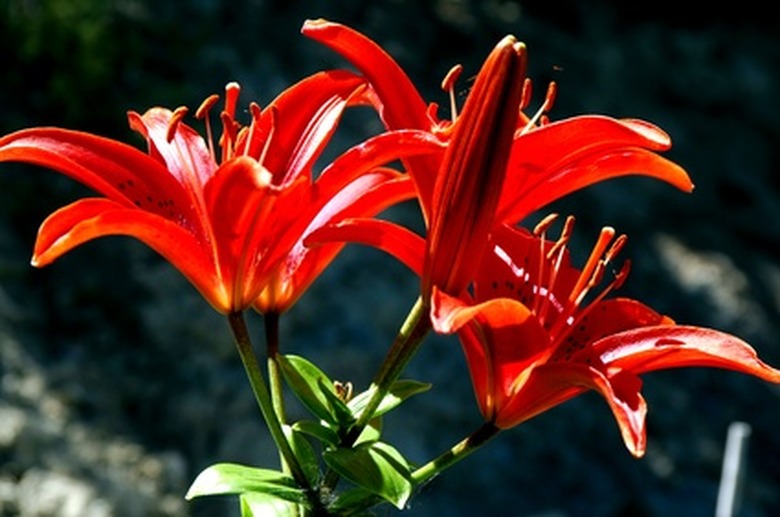Best Ways To Care For The Asiatic Lily
Asiatic lilies are simple to grow in the home garden as they require less care than other type of lilies. They are cold hardy, surviving cold winters with little aid. Asiatic lilies also have strong stems that require no staking and aren't prone to wind breakage. Grow these exotic plants in your home garden and ensure they thrive by taking proper care of them throughout the year.
Light
The best way to ensure that your lilies thrive is to plant them in an area that supplies both their soil and sun needs. Asiatic lilies require full sunlight to thrive and bloom at their best, so locate the garden bed in an area that receives 6 to 8 hours of sunlight throughout summer. If lilies don't receive enough light, they tend to become spindly and they bloom poorly.
- Asiatic lilies are simple to grow in the home garden as they require less care than other type of lilies.
- Asiatic lilies require full sunlight to thrive and bloom at their best, so locate the garden bed in an area that receives 6 to 8 hours of sunlight throughout summer.
Soil
When choosing the full-sun site for the bed, keep in mind the quality of the soil in the area. Asiatic lilies are not overly picky about soil, as long as it is well-drained. Avoid areas that are prone to standing water after rainstorms or during snow melt.
To test the drainage of a garden area, completely soak the area with a hose until there is standing water. If the water drains within four hours, the site is fine. If it doesn't, work compost or peat moss into the soil prior to planting to improve drainage.
Mulch
While Asiatic lilies are frost-hardy, the heaving of the ground as it freezes and thaws can damage the bulbs. Mulch over the lily bed in fall when the ground begins to freeze with a 4-inch layer of wood chips, compost or straw. This helps maintain the soil temperature and prevents heave.
- When choosing the full-sun site for the bed, keep in mind the quality of the soil in the area.
- To test the drainage of a garden area, completely soak the area with a hose until there is standing water.
Remove the mulch gradually in the spring once the lily foliage begins growing in. A 2-inch layer of bark mulch applied after the winter mulch is removed preserves oil moisture while preventing weeds.
Fertilizer
Asiatic lilies do not require frequent fertilization. A single application each spring supplies enough nutrients for the lilies to thrive throughout the summer. Lily-specific fertilizers are available, but a general 5-10-10 analysis fertilizer supplies the phosphorus and other nutrients needed for large, healthy blooms. Apply the fertilizer once the lilies begin growing each spring following the application rate on the fertilizer package.
Irrigation
Water lilies once a week throughout most of the spring and summer. During hot, dry periods twice a week watering may be necessary. Apply about 1 to 2 inches of water at each irrigation to ensure the root zone is thoroughly moistened. Generally, the soil should be moist if you stick your finger into it, but it shouldn't be soggy.
- Remove the mulch gradually in the spring once the lily foliage begins growing in.
- Apply about 1 to 2 inches of water at each irrigation to ensure the root zone is thoroughly moistened.
Pruning
Lilies do not require extensive pruning. Deadheading is a minor way of pruning that encourages further flowering on the Asiatic lily as it prevents seed production. Break off the flowers once they are done blooming and the petals begin to wither. Dispose of or compost the removed flowers and any other old plant matter in the lily bed. This helps prevent diseases, such as botrytis blight, from becoming established in the bed.
